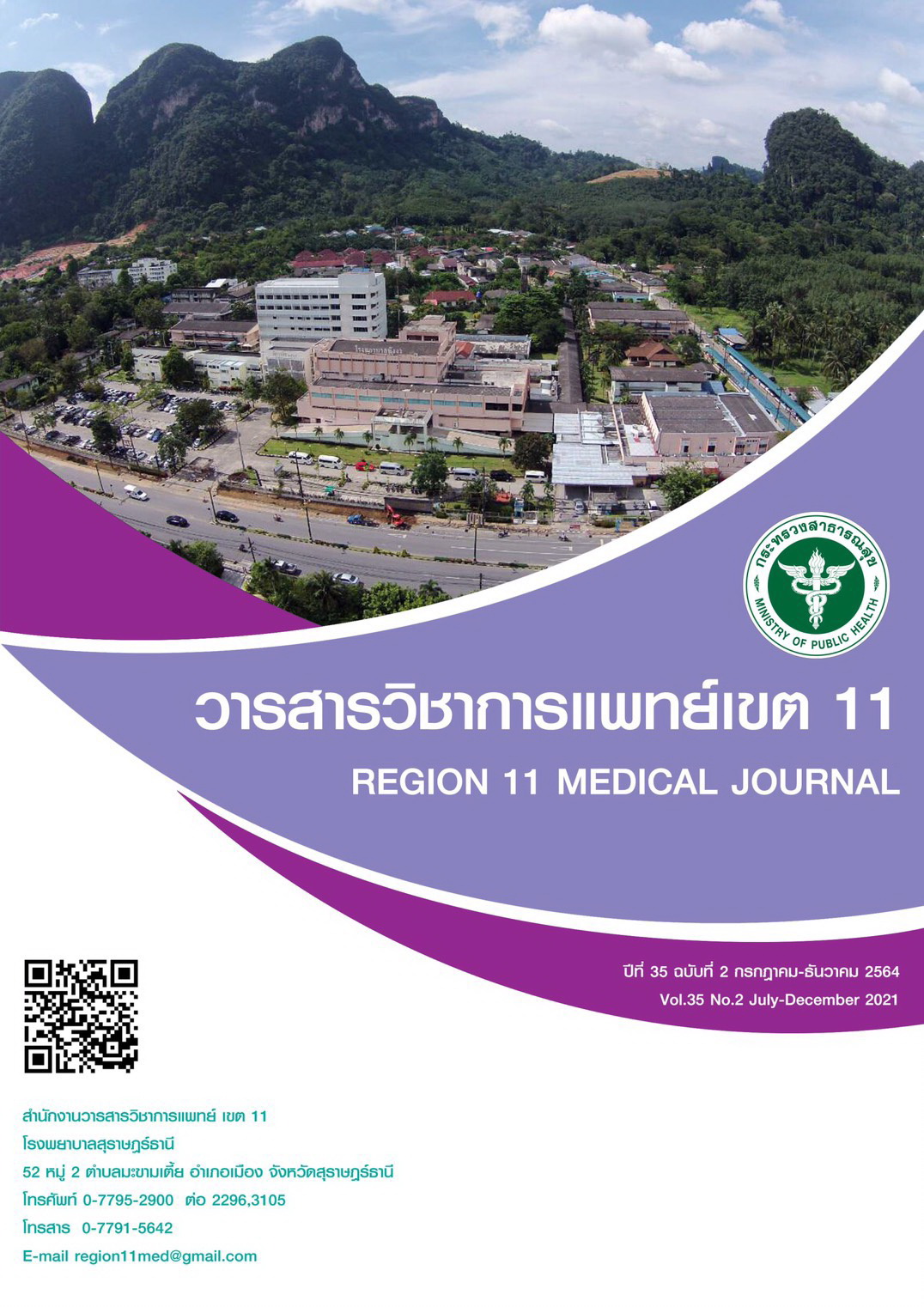Calcium channel blockers use in iron overload for thalassemias with regular blood transfusions
Keywords:
Calcium channel blockers, Iron overload, ThalassemiaAbstract
Iron overload is a common complication of thalassemia. The iron accumulation in any organs causes free radicals that damage cells and then lead to cardiomyopathy which serves as the major cause of death so this complication should be treated appropriately with iron chelators as the mainstay of therapy. Some patients could not achieve target iron level even with maximum dosage of iron chelators. Moreover, a number of them suffer from adverse effects, leading to intolerance to use standard dosage. Therefore, the use of calcium channel blockers, as an adjunctive therapy with iron chelators for iron overload treatment, is an appealling option due to their pharmacological activity that can reduce iron accumulation in myocytes. Several clinical studies have shown that oral calcium channel blockers in addition to standard iron chelators for iron overload in beta thalassemia major with regular blood transfusion have had beneficial effects for reduction in myocardial iron as well as having tolerable adverse effects. Nevertheless, the meta analysis showed that the use of calcium channel blockers as an adjunctive therapy with iron chelators had no significant reduction of iron amount in the heart because there is not enough good quality study thus the true benefits of this therapy can not be concluded. Therefore, further studies are needed in the future and the application of calcium channel blockers to patients with thalassemia should be selected in specific cases with advers effects and failure of target iron level after treatment with all types of iron chelators according to therapeutic guidelines.
References
Cappellini MD, Cohen A, Taher A, Porter J, Viprakasit V. Guidlines for the management of Transfusion Dependent Thalassemia (TDT). 3rd ed. Nicosia (CY): Thalassemia International Federation; 2014.
วิปร วิประกษิต. “ธาลัสซีเมีย”: การดูแลรักษาโรคโลหิตจางธาลัสซีเมียแบบบูรณาการ. วารสารโลหิตวิทยาและเวชศาสตร์บริการโลหิต; 2556;23:303-20.
Dev S, Babitt JL. Overview of Iron Metabolism in Health and Disease. Hemodial Int; 2017;21(1):s6-20.
Jomova K, Valko M. Advances in metal-induced oxidative stress and human disease. Toxicology; 2011;283(2-3):65-87.
Porter JB. Pathophysiology of transfusional iron overload: contrasting patterns in thalassemia major and sickle cell disease. Hemoglobin; 2009;33 Suppl 1:S37-45.
Borgna-Pignatti C, Cappellini MD, De Stefano P, Del Vecchio GC, Forni GL, Gamberini MR, et al. Cardiac morbidity and mortality in deferoxamine- or deferiprone-treated patients with thalassemia major. Blood; 2006;107(9):3733-7.
Vichinsky E, Levine L, Bhatia S, Bojanowski J, Coates T, Foote D, et al. Standard of care guidelines for thalassemia 2012 [Internet]. 2012 [cited 2020 Oct 10]. Available from: URL: http://www.thalassemia.com/treatment-guidelines-0.aspx#gsc.tab=0
Michel T, Hoffman BB. Ca2+ channel antagonists. In: Bruton LL, editor. Goodman & Gilman’s the pharmacological basis of therapeutics. 12th ed. New York: McGraw-Hill; 2011. p. 755-60.
Striessnig J, Ortner NJ, Pinggera A. Pharmacology of L-type calcium channels: novel drugs for old targets? Curr Mol Pharmacol; 2015;8:110-22.
Godfraind T. Calcium channel blockers in cardiovascular pharmacotherapy. J Cardiovasc Pharmacol Ther; 2014;19:501-15.
Katzung BG. Calcium channel-blocking drugs. In: Katzung BG, editor. Basic & clinical pharmacology. 14th ed. McGraw Hill and Lange; 2018. p. 202-6.
Tsushima RG, Wickenden AD, Bouchard RA, Oudit GY, Liu PP, Backx PH. Modulation of iron uptake in heart by L-type Ca2+ channel modifiers possible implications in iron overload. Circ Res; 1999;84:1302-9.
Oudit GY, Sun H, Trivieri MG, Koch SE, Dawood F, Ackerley C, et al. L-type Ca2+ channels provide a major pathway for iron entry into cardiomyocytes in iron overload cardiomyopathy. Nat Med; 2003;9:1187-94.
Ludwiczek S, Theurl I, Muckenthaler MU, Jakab M, Mair SM, Theurl M, et al. Ca2+ channel blockers reverse iron overload by a new mechanism via divalent metal transporter-1. Nat Med; 2007;13:448-54.
Corbett AH, Golembiewski JA, Gonzales JP, Johnson S, Lowe JF, Rybarczyk A, et al. editors. Drug information handbook with international trade names index. 27th ed. Ohio: Lexi-Comp; 2018.
Khaled A, Salem HA, Ezzat DA, Seif HM, Rabee H. A randomized controlled trial evaluating the effects of amlodipine on myocardial iron deposition in pediatric patients with thalassemia major. Drug Des Devel Ther; 2019;13:2427-36.
Sangam K, Devireddy P, Konuru V. Calcium channel blockers induced peripheral edema. IJPSR; 2016;7(6):290-3.
Eghbali A, Kazemi H, Taherahmadi H, Ghandi Y, Rafiei M, Bagheri B. A randomized, controlled study evaluating effects of amlodipine addition to chelators to reduce iron loading in patients with thalassemia major. Eur J Haematol; 2017;99:577-81.
El-Haggar SM, El-Shanshory MR, El-Shafey RA, Dabour MS. Decreasing cardiac iron overload with amlodipine and spirulina in children with β-thalassemia. Pediatric hematology oncology journal; 2018;3:64-9.
Gujja P, Rosing DR, Tripodi DJ, Shizukuda Y. Iron overload cardiomyopathy better understanding of an increasing disorder. J Am Coll Cardiol; 2010;56(13):1001-12.
Fernades JL, Sampaio EF, Fertrin K, Coelho OR, Loggetto S, Piga A, et al. Amlodipine reduces cardiac iron overload in patients with thalassemia major: a pilot trial. Am J Med; 2013;126:834-7.
Fernades JL, Loggetto SR, Verissimo MA, Fertrin KY, Baldanzi GR, Fioravante LAB, et al. A randomized trial of amlodipine in addition to standard chelation therpy in patients with thalassemia major. Blood; 2016;128:1555-61.
Sadaf A, Hason B, Das JK, Colan S, Alvi N. Calcium channel blockers for preventing cardiomyopathy due to iron overload in people with transfusion-dependent beta thalassemia. Cochrane Database Syst Rev; 2018;7:CD011626.






